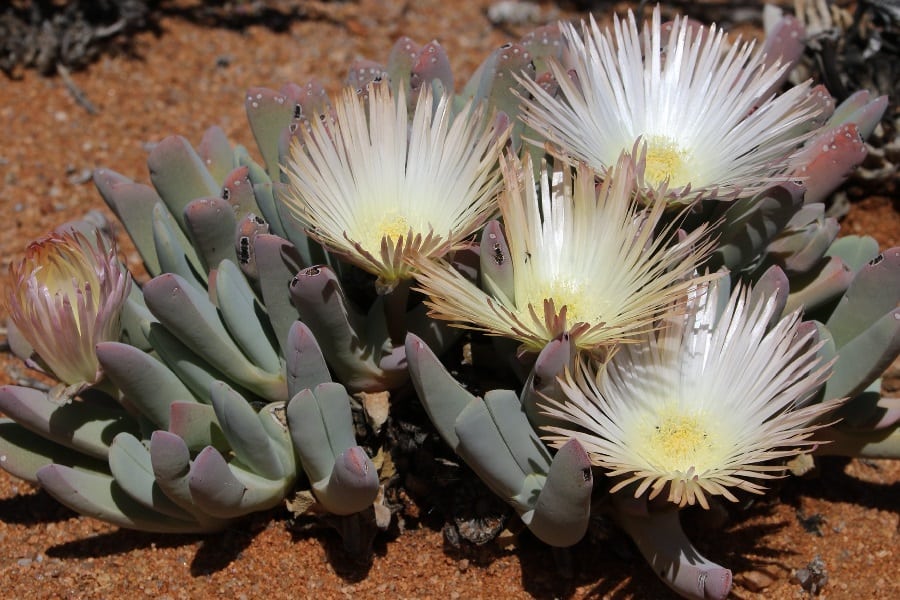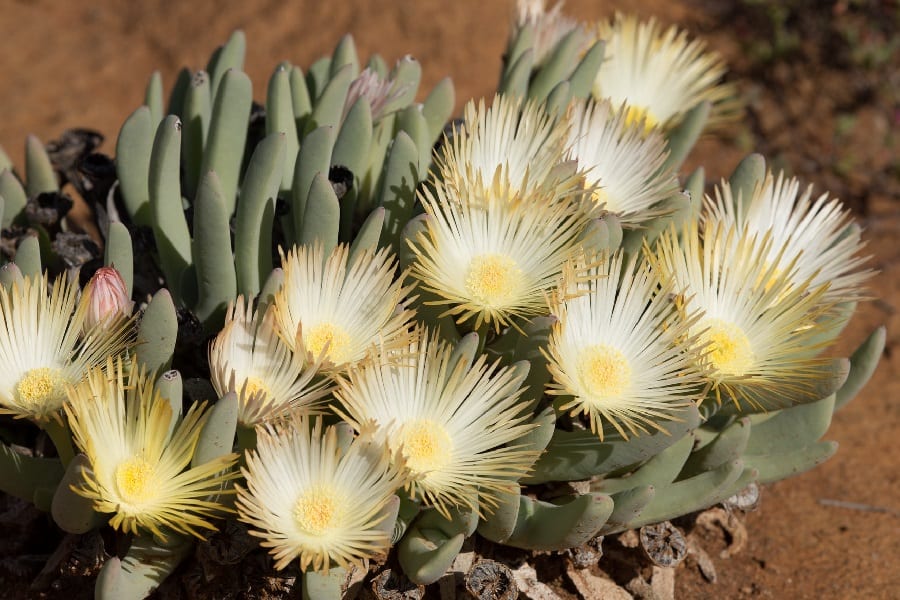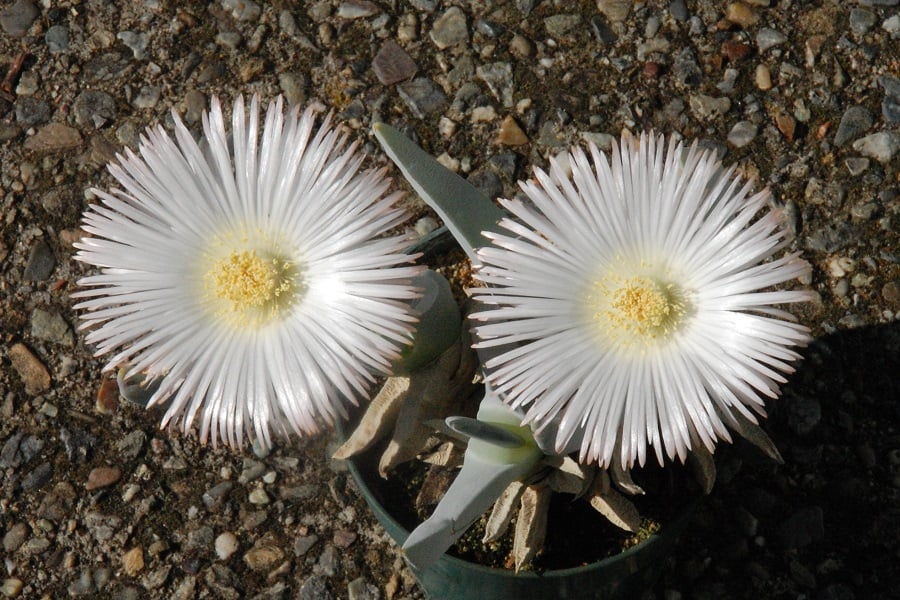You Won’t Believe How Cute This Cheiridopsis denticulata Plant Is!
Prepare to be obsessed with the most adorable little succulent you’ve ever seen – Cheiridopsis denticulata! This quirky plant, native to the desert regions of South Africa, has the cutest chunky leaves that resemble little lobster claws. Trust me, once you lay eyes on it, you’ll be head over heels!

Contents
About Cheiridopsis denticulata
Also called the Carpet Weed or Tongue Plant, this low-growing succulent forms a dense mat of fleshy blue-green pairs of leaves. The mismatched leaf shapes give it a wonderfully unique and whimsical look. During the winter growing season, it produces vibrant yellow, orange, red or violet flowers that attract tons of pollinators. Just wait until you see this miniature marvel in full bloom!
Despite its delicate appearance, Cheiridopsis denticulata is one tough customer. It thrives in the harshest desert conditions of places like Namaqualand in South Africa. But don’t worry, this resilient plant can adapt just fine to your home too!
Related Post:
16 Unique Types of Cheiridopsis With Pictures
How to Care for Cheiridopsis denticulata
Light Requirements
Like most succulents, Cheiridopsis denticulata craves lots of bright sunshine. Aim to give it 6-8 hours of direct light daily. A sunny window ledge is perfect! If sunlight is limited indoors, use a grow light positioned 4-6 inches above the plant for 12-14 hours per day.

Water Wisely
This desert native doesn’t need frequent watering. Allow the soil to fully dry out between waterings during its winter growing period, then cut back even more in summer dormancy. When watering, thoroughly soak the potting mix until excess moisture drains from the holes. But don’t let it sit in water!
Soil Needs
For optimal growth, your little lobster plant requires a well-draining potting mix made especially for cacti and succulents. Regular potting soil will retain too much moisture. Mix in some extra perlite or coarse sand to increase drainage and prevent rot.
Feeding Time
Like other succulents, Cheiridopsis denticulata benefits from a gentle succulent fertilizer every few weeks during its active growth phase. Look for a balanced liquid fertilizer with micronutrients. Dilute it to half-strength before applying.

Climate Needs
Being a desert plant, Cheiridopsis denticulata thrives in warm and dry conditions. It can handle hot summer temperatures up to 100°F with no issues. During its winter growing phase, aim to keep things cooler in the 60-75°F range.
This succulent is remarkably cold-hardy too! If temperatures dip below 40°F where you live, you can leave your lobster plant outdoors and it should survive just fine. But for extended freezing conditions, it’s best to move it indoors until warmer weather returns.
Pests and Problems
In general, Cheiridopsis denticulata is a vigorous, low-maintenance plant that avoids most diseases. Provide it with the right conditions and you likely won’t run into any major issues.
The main pest to watch out for is mealybugs. These cotton-like critters can infest the tight crevices between the fleshy leaf pairs. If you spot them, immediately isolate the plant and treat with an insecticidal soap or neem oil spray. Severe infestations may require discarding the plant to prevent spreading.
Propagating Cheiridopsis denticulata
One of the coolest things about this plant? It’s a breeze to propagate from cuttings or seeds!
To propagate from cuttings:
- Use a clean, sharp knife or pruners to snip off stem segments
- Allow cuttings to callus over for 3-5 days before potting
- Plant cuttings in a well-draining cactus/succulent mix
- Water sparingly at first until roots form in 2-4 weeks
For seeds:
- Fill a shallow tray with succulent soil
- Lightly moisten the soil
- Sprinkle seeds on top of soil, no need to cover
- Mist regularly to keep soil lightly moist
- In 2-4 weeks, tiny plantlets should emerge!
With its funky looks and easygoing nature, Cheiridopsis denticulata makes the perfect pet plant! This low-maintenance cutie is sure to steal your heart. Grab one of these whimsical wonders and get ready to show it off to all your friends. I promise they’ll go crazy for its offbeat charm!
If you are propagatingnd then plant them in a well-draining succulent mix. Water every week or until the soil is completely dry. New buds should sprout in a couple of weeks.
